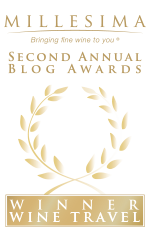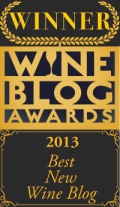Twenty years ago, I fell in love with wine as a student of Thomas Jefferson’s college, the University of Virginia. As America’s first wine lover, his spirit lived on in the surrounding vine-covered hills of Albemarle County where I tasted the first bottle that sparked my curiosity, a Viognier from the aptly named Jefferson Vineyards. On a student budget, I had limited money for sampling the great wines of the world. Instead of drinking Burgundy, Bordeaux, or Champagne, I read about them in my monthly subscription of Wine Spectator. Around that same time, the late 90s, an issue of the magazine praised an up-and-coming region I’d never heard of: Priorat.
Not long after noting to watch out for this Catalan DO, I embarked on a summer adventure across Europe. I found myself in Barcelona for a few days and nearing the end of my trip, stopped in a wine shop. Scanning the shelves for anything labeled Priorat, I found three bottles and purchased them. Of course, I had no idea what they were; apps like Vivino, to scan labels for clues as to what flavors lay inside, didn’t exist. The clerk packed them neatly in a three-pack box, as the luxury of carrying alcohol into the cabin at the time remained. Thrilled to return to Virginia with the bottles, I carried them on the train to Madrid for the last leg of my trip before flying home. And it was on that train, at my feet beneath the bench, that I left that box as I scrambled off the car to avoid missing my station.
I would not return to the wines of Priorat for nearly a decade after. I graduated, moved to New York, and finished law school. I worked miserably as a lawyer before exchanging that career for a less lucrative but more honest, happier one in wine. And I wouldn’t alight upon one of Priorat’s mountain villages until nearly two decades later, which is where I sit now, typing this story.
As a Master of Wine student, I received the honor on an invitation to attend the fourth annual Espai Priorat this year. The three-day exhibition encompassed 44 wineries from 9 villages and featured vineyard visits, intimate dinners, and winery tastings, culminating with the presentation of all the wineries inside the ruins of Scala Dei Monastery.
Scala Dei is considered the birthplace of present-day Priorat’s wine industry. As with many renowned wine regions, we have religion, namely monks, to thank for their existence. As with many renowned wine regions, we have religion, namely monks, to thank in part for their existence. In Priorat, the Carthusians from Provence settled in the foothills of the Montsant mountain range in the 12th century, and were the first to recognize the suitability of the land for grape cultivation.
But this remote, hardscrabble area southwest of Barcelona would see de-population in the late 19th and early 20th centuries. First, the phylloxera louse ravaged vines; later, the economics of rural life coupled with the socio-political effects of the Spanish Civil War drove flight to urban centers. Only a fraction of the region’s families remained behind to tend the Grenache (Garnatxa/Garnacha) and Carignan (Cariñena) vines – today’s 80- to 100-year-old wizened beauties. Little else could grow in the poor, rocky soil. To see Priorat is to understand this reality.
And this week, I finally saw it. After scrambling to the top of a steep and slippery Mas Doix holding, my eyes swept across the landscape first painted by words inside that oversize glossy wine magazine. Hemmed in by the beautiful Montsant in the north, evocative of the American West in its steel and bronze striations, I beheld Priorat’s impossible vineyards. Broken slate called ‘licorella’ defined the soil. Hillsides as precipitous as roller coasters or carved into narrow terraces, defined their difficulty. And the small return for all this labor, yields as low as 300 grams of fruit per vine, evidenced growers’ tenacity.
A lot has happened in those twenty years. The arc of my life and search for my identity is perhaps not so different from the evolution of Priorat since modern pioneers like Barbier, Baste, Pérez, and Palacios propelled the region out of obscurity and into a DOQ award by 2000. Since then, winemakers have separately and collectively searched for their wines’ authentic voices against the pressure of market trends, economic realities, and style preferences, especially from certain influential critics whose baritones now, thankfully, wane. Debates over ripeness versus elegance, new versus used oak, modern versus traditional winemaking and farming techniques, irrigation versus dry farming, and using international varieties like Merlot and Cabernet Sauvignon versus showcasing the native grapes of Grenache and Cariñena, persist, with the addition of a new concern: climate change.
But my takeaway from interviews and tastings across the week is this: having spent the better part of a rapid ascent to the top looking in all directions, producers are now refocused inward — to the truth of their land, their fruit, and themselves — to answer these questions. And from introspection springs wine with soul.
Later this week, I will publish my top ten wines from the Espai Priorat Exhibition.











